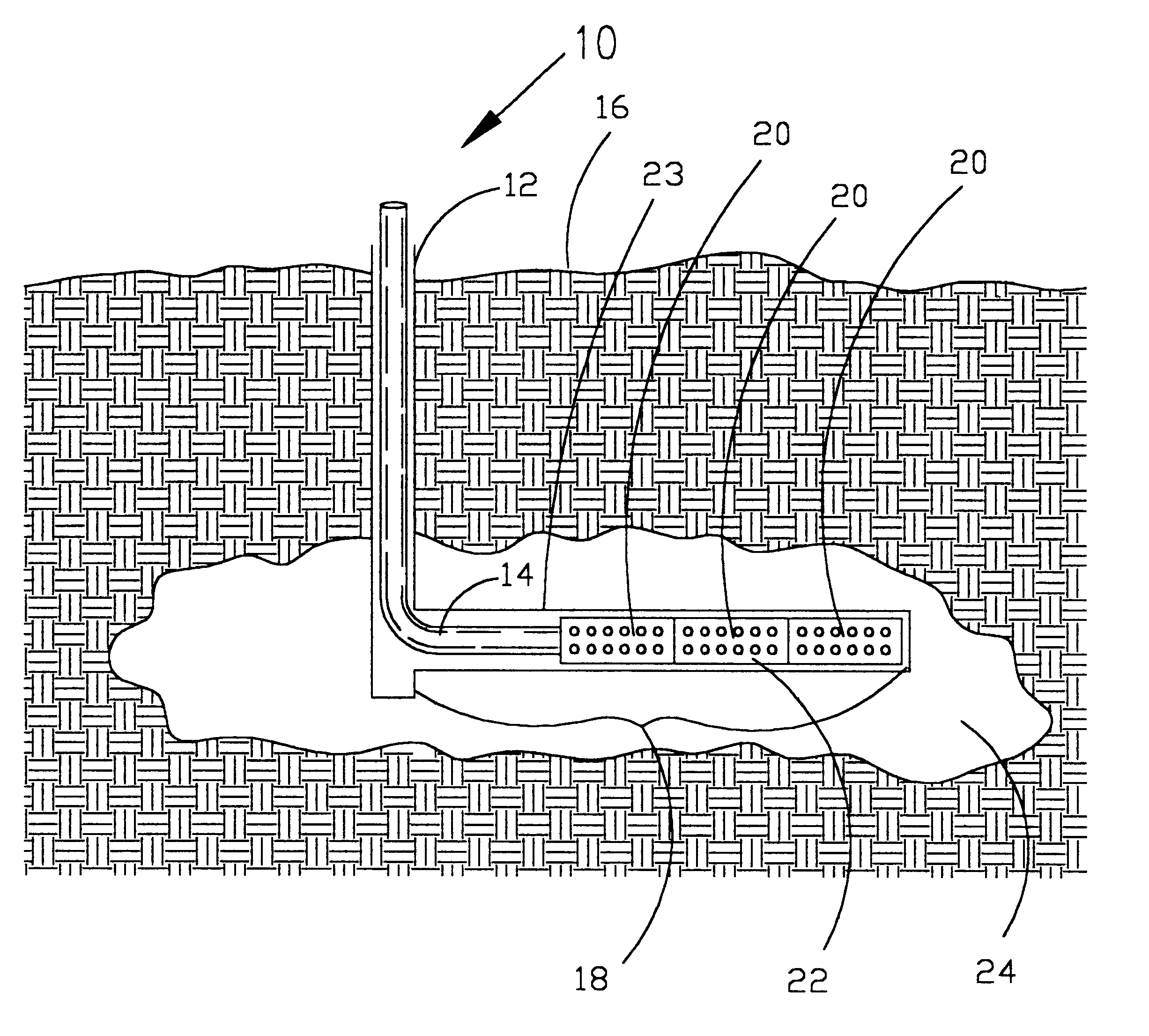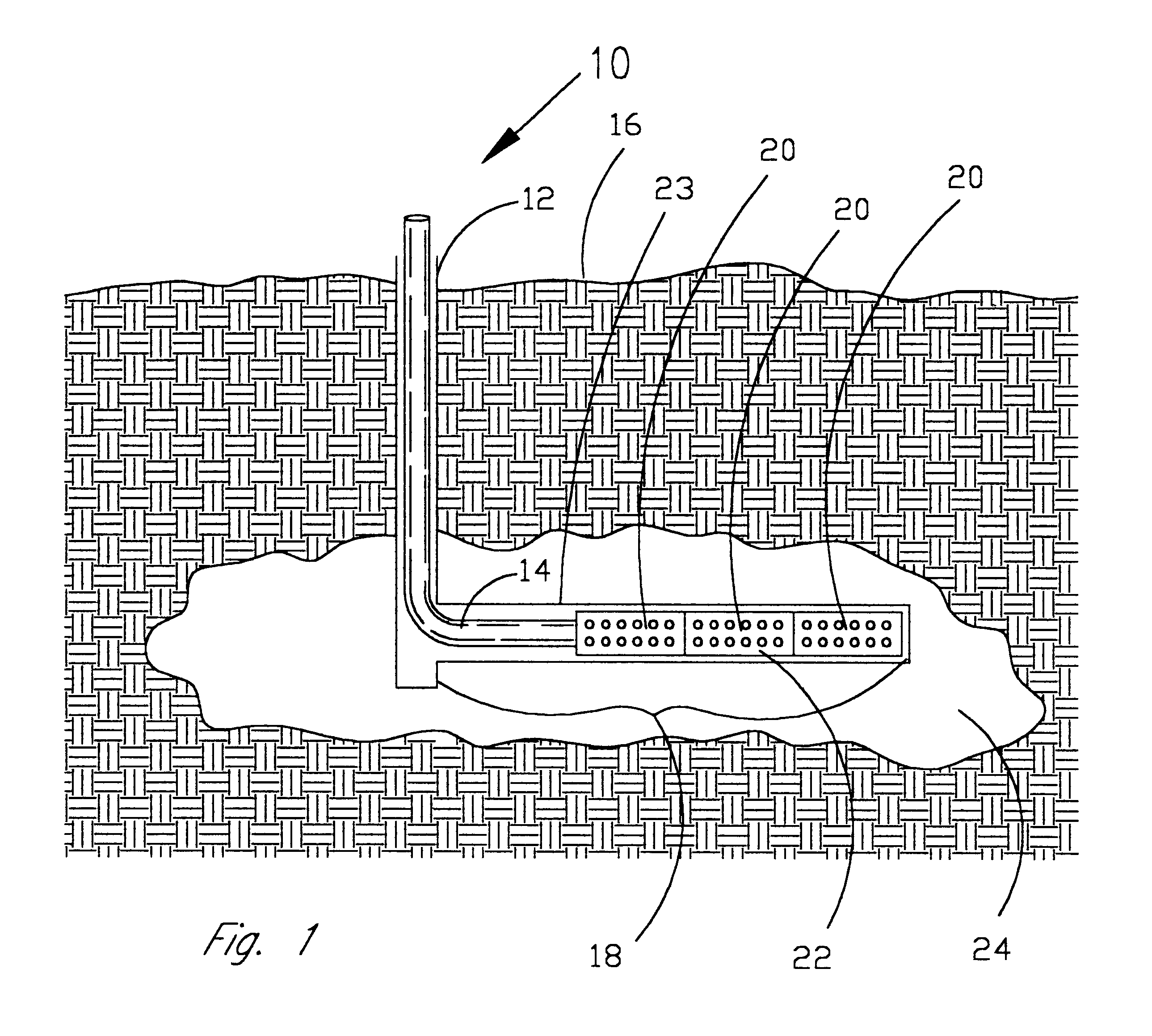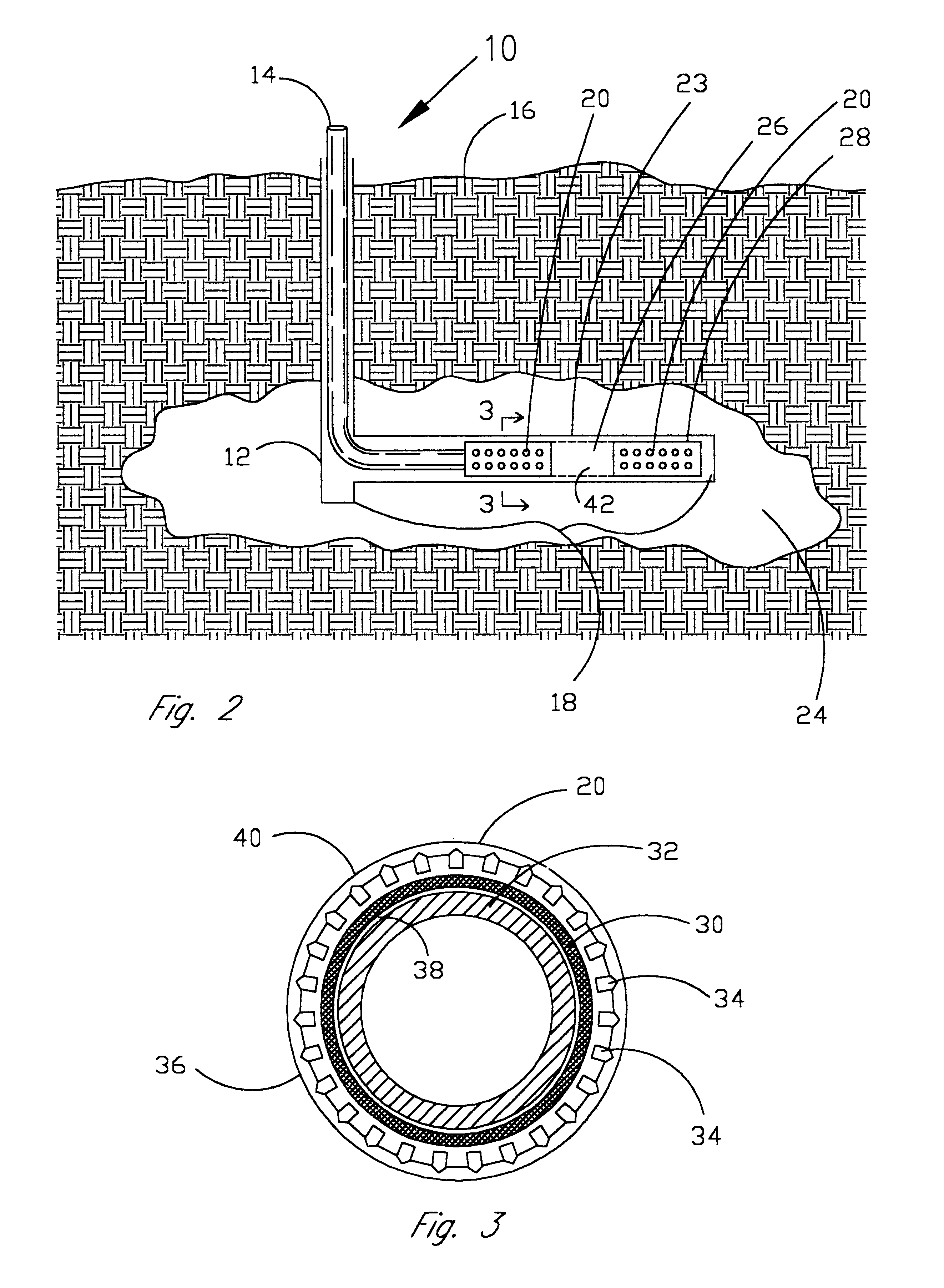Product and process for coating wellbore screens
- Summary
- Abstract
- Description
- Claims
- Application Information
AI Technical Summary
Benefits of technology
Problems solved by technology
Method used
Image
Examples
Embodiment Construction
of a Filtercake Degradation Test
This test was run according to the procedure given above. The drill-in fluid was a water-based fluid containing sized calcium carbonate particles, starch, xanthan gum, and bactericide and was designed to control mud leakoff rate and to be stable at the test conditions. The drill-in fluid was placed into the test cell, heated to the specified test temperature, i.e. 150 degrees Fahrenheit in this test run, and a 300-psi differential placed across the ceramic disc to allow leakoff to occur for 4 hours. A total of 22 ml of filtrate from the drilling fluid passed through the ceramic disc. The remaining drilling fluid was then removed from the cell and 300 ml of 2% potassium chloride solution placed into the cell. The coated screen was then lowered into the cell approximately 1 inch above the drilling fluid filtercake. The cell was allowed to return to the specified test temperature and the 300-psi differential pressure across the filtercake and ceramic dis...
PUM
 Login to View More
Login to View More Abstract
Description
Claims
Application Information
 Login to View More
Login to View More - R&D
- Intellectual Property
- Life Sciences
- Materials
- Tech Scout
- Unparalleled Data Quality
- Higher Quality Content
- 60% Fewer Hallucinations
Browse by: Latest US Patents, China's latest patents, Technical Efficacy Thesaurus, Application Domain, Technology Topic, Popular Technical Reports.
© 2025 PatSnap. All rights reserved.Legal|Privacy policy|Modern Slavery Act Transparency Statement|Sitemap|About US| Contact US: help@patsnap.com



